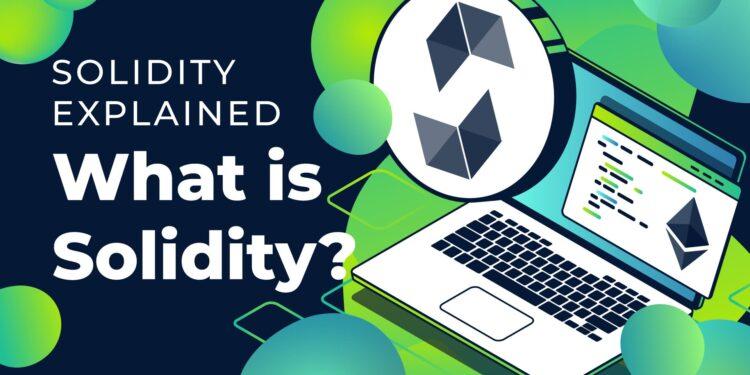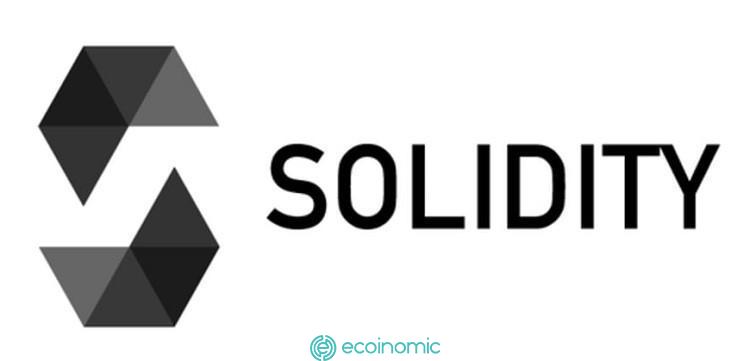Advertisement
Solidity was first proposed in 2014 and developed by core contributors to the Ethereum blockchain platform.
In the article below, Ecoinomic.io will provide basic information about Solidity and how it works in the Ethereum ecosystem.
What is Solidity?
Solidity is a high-level programming language for designing and building smart contract in Ethereum Virtual Machine and other blockchain development platforms.

Solidity smart contracts help automate business and non-business processes, limiting the risks of fraud when trading.
Tools Solidity offers
- Solgraph: creates DOT graphs, displays the flow that controls the functionality of Solidity contracts, and detects security vulnerabilities.
- Solidity REPL: writes the source code on Solidity Console.
- EVM Lab: includes the Etherchain API, a tracking viewer, and a virtual machine that provides interoperability with the EVM.
- EVMdis (EVM Disassembler): performs static analysis on bytecode to provide a higher level of abstraction than raw EVM operations.
What blockchains is Solidity running on?
Solidity is running on blockchains:
- Ethereum
- BNB Chain (Binance Smart Chain)
- Ethereum Classic
- Avalanche C-Chain
- External links
- Tron
- Hedera Hashgraph
- Polygon
- Optimism
Application of Solidity
With solidity programming language, programmers can easily apply blockchain technology to potential socio-economic life fields.

DeFi
Developers can create a smart contract to enforce the rules governing financial products or service, automate payments, claims, collaterals, bonds,… on the blockchain.
DeFi DApps offer flexible alternatives to traditional finance. The DApp is not regulated by any central authority. Through available 24/7 system, it allows users to experience financial services even without a bank account.
Identity verification
By providing autonomous identities for Ethereum dApp users, Solidity smart contracts do not limit data on a centralized basis. Important personal information is stored on the Ethereum blockchain and is only accessed through dApps, enhancing data security.
Besides, Solidity is a bridge to create trust among machines in IoT, establishing relationships based on device identity.
DAO
By integrating Solidity’s features, DAO provides a framework for decentralized governance, saving costs by automating payments and incentives.
Developers can set up advanced security systems, make the voting and election process more transparent, avoid data manipulation frauds, fake voters, change voting machines,…
Code is law – Law is code
Developers can easily customize smart contracts to replicate the features of legal contract, automate the legal system, shorten procedural processing, and reduce administrative costs.
Asset tokenization
The tokens represent ownership of real estate assets, unify the world of blockchain and real estate.
In the near future, Solidity smart contract is expected to play a greater role in the registration, record keeping, sale, brokerage, transfer and management of real estate.
Furthermore, retail investors who cannot afford to buy the entire property will have the opportunity to participate in investments, share profits, and enhance value through a range of real estate tokenization tools.
GameFi
Solidity makes it easier to operate the NFT marketplace in GameFi, connecting multiple dApps and platforms. Users can convert any existing NFT to another NFT game.
Besides, NFT verifies the identity, ownership, and immutability of players’ transactions. Adding a scarce attributes to tokens makes avatars and objects especially more valuable because of their uniqueness.
Closed auction
Solidity smart contracts play an important role in closed auctions, ensuring users can’t see others’ bids until the auction is over.
Crowdfunding
Applying Solidity smart contracts in the crowdfunding process helps to solve problems such as third-party commissions and data management, which does not require centralized systems to build trust, thus reducing additional costs.
Advantages and Disadvantages of Solidity
Advantages of Solidity
- Solidity builds reliable, transparent smart contracts that increase operational efficiency. The entire code of 1 token will be public.

- Providing document about open source that makes it possible for developers to consult and build more complex applications from previous applications.
- Integrating programming awareness from C++, Python, JavaScript, making it easier to learn Solidity if you already know Java or C++ languages.
Disadvantages of Solidity
- Can’t be changed: Developers can’t upgrade and add additional features after the contract is implemented.
- As a new programming language: Compared to older languages such as Python, C++, and Javascript, Solidity is quite new in the market and has not been used by many programmers.
- Less reference data: The information about Solidity is very limited, making the process of learning and applying Solidity more difficult. Developers can only optimize solidity applications with real-world testing.
>>> Related: How to sign up for a Binance account
Conclusion
Solidity is a superior solution in the development of smart contract technology and its application in socio-economic life fields. Through the above article, Ecoinomic.io has provided full information about what Solidity is and its applications in the blockchain.
If you have any questions, please leave a comment below, Ecoinomic.io will answer you as soon as possible.
















